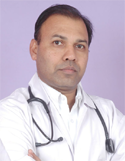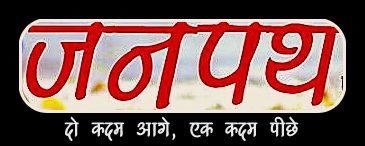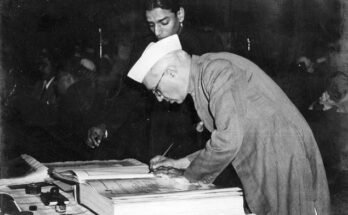April 10 is celebrated as World Homeopathy Day. Now 210 years of homoeopathy have been completed in India. The development of homoeopathy in these two centuries proves it true on the test of public service. During this, the questions raised on the scientificity of homoeopathy also helped in making homoeopathy more relevant. The growing challenges of public health in the world and the failure of allopathy to deal with them have also allowed homoeopathy to become prevalent. Even after spending a huge amount of money in India in 75 years of independence, the government’s resolve to strengthen public health only through allopathy remains incomplete. In the recent three decades, especially after the beginning of liberalization, the new drug of development ‘Privatization’ has opened the doors of prosperity for a few, while pushing a large population towards further poverty. Inequality has increased and common people are trapped in a debt trap due to expensive treatment. In this background, homoeopathy, which became popular as a cheap and scientific medical option, has given sleepless nights to the allopathic lobby by showing its effect on medicine.
Opponents of homoeopathy argue that it is not a scientific method of medicine but a sweet pill or magic potion. In medical language, it is being dismissed as a “placebo”. In fact, in 2005, a British medical journal ‘Lancet’, in an article, questioned the scientificity and effectiveness of homoeopathy and described it as “nothing more than a placebo”. It was argued that the efficacy of homoeopathy did not stand up to scientific testing. This comment from Lancet shocked the homoeopathic doctors and scientists. This was also the time when homoeopathy was rapidly becoming a popular system of medicine in Europe. Meanwhile, the World Health Organization published a report stating the importance of homoeopathy, “The Traditional Medicine in Asia.” The scientificity of homoeopathy and its successful effects were mentioned in this report. It was natural for the allopathic lobby to panic due to this cheap, accessible and scientific method of medicine becoming popular at the world level, for example, the attack of allegations on homoeopathy was starting. However, homoeopathy was highly praised in an article published in the same Lancet in 1997.
It is said that the extent of mutual competition in science and technology is extremely dirty and dangerous. Despite the limitations of homoeopathy in modern diseases, she cannot see any other system of medicine developing before her. The victim of this annoyance of allopathy, homoeopathy also faces the challenges of many incurable and complex diseases. The 2007 National Health Interview Survey in the US found that people are increasingly adopting homoeopathic medicine as a safer medical option. In that year, 3.9 million adults and 9 million children took homoeopathic medicine in America.
Homoeopathy is a healing method that has evolved from the very beginning with interesting and optimistic aspects being discussed. It is said that in 1810, German travellers and missionaries brought it to India. Then these little sweet pills benefited the Indians and started setting their coin. In 1839, Dr John Martin Honigeverger, a homoeopathic doctor from France, came to India for the treatment of the serious illness of Maharaja Ranjit Singh of Punjab. The Maharaja greatly benefited from Dr Honigberger’s treatment. Later in 1849, when Punjab was occupied by Sun Henry Lawrence, Dr Honigberger returned to his country. In 1851, another foreign doctor, Sir John Hunter Litter, established a free homoeopathic hospital in Calcutta. In 1868, the first Indian Homeopathic magazine started in Calcutta and in 1881, Dr P.C. Majumdar and Dr D.C. Rai established India’s first homoeopathic college in Calcutta.
Hippocrates, the father of modern medicine, mentioned the Rationalism (rationalist) and Holistic (holistic) systems for health in the fourth century. Among these, holistic opinion has been considered more important. According to this, health is a positive state. The World Health Organization has also started considering health as a similar condition. We call health the harmony of body, mind and soul activities. Homoeopathy is the only system which subtly induces the healing capacity of the body to make the body disease-free. It also controls all the functions of the body. In homoeopathy, the physical action or reaction caused by an external element (bacterium or virus) is not considered a disease, it is considered a condition caused by the disease. Treatment in homoeopathy is not done in the name of the disease, but after studying the patient’s nature, nature, general symptoms, mental condition etc., a potent homoeopathic medicine is selected for him.
The story of the invention of homoeopathy is also very interesting. Dr Samuel Hahnemann, a renowned allopathic physician from Germany, realized in the course of medicine that allopathic medicine only gives temporary benefits to the patient. Based on his study and research, he tried to strengthen medicine, then he got unwanted success and he invented homoeopathy in the year 1790. He introduced the principle of Homeopathy “Similia-Similibus-Curanter” i.e. “Like cures like”.
The credit for introducing this goes to Dr Hahnemann. In that period, allopathic physicians took a big risk of adopting homoeopathic theory, because a large and powerful section of allopathic physicians was strongly opposed to this revolutionary theory. Dr C. Herring, a famous American allopath, took the responsibility of writing a dissertation to prove homoeopathy useless. He started studying homoeopathy seriously. Dr Herring had a personal problem. One of his fingers had become gangrene. This finger was rotten after the examination of a contaminated dead body. His finger was saved from being amputated by the use of homoeopathic medicine. They were surprised. After this incident, he tore up his thesis against homoeopathy and threw it away. Later he proved to be a big pillar of homoeopathy. He also propounded the “law of disease relief”. Risking his life, Dr Herring also prepared an important homoeopathic medicine “Lachesis” from the deadly venom of snakes, which is important in the treatment of many serious diseases.
It is well known that the challenges of public health are increasing in the world. And the modern medical system is proving to be a failure in dealing with these challenges. Be it Plague or SARS, Malaria or TB, Diarrhea or Flu, allopathic medicines have only increased the complexity of diseases instead of curing them. Malaria has become more deadly. T.B. Medicines have become ineffective, the flu virus has developed immunity against the disease itself. The body is no longer able to tolerate antibiotics. Due to malnutrition, the common man is getting sick very quickly. In this case, homoeopathy can be a better option. The important role of homoeopathy in the management of public health is being ignored even today. It should be remembered that in the era of the plague, homoeopathy not only treated the disease but also saved millions of people from getting trapped in the clutches of the plague in the form of preventive medicine. A complete range of homoeopathic medicines is available to prevent many deadly epidemics. There is a need to try this method completely.
People who consider homoeopathy only a miracle are forgetting that it is a complete treatment method. Today, behind the criticism of homoeopathy is the frustration of modern doctors and pharmaceutical companies arising out of allopathy and its failure. Not only in India, but homoeopathy is also a rapidly emerging and spreading medical method in the whole world. Assocham, the representative body of Indian trade, estimates that the homoeopathy business is growing at an annual rate of 25 per cent as against 13 per cent for allopathy.
There is no doubt that homoeopathy has the potential to meet the health challenges of the future, but given the seriousness of the crisis and the complexity of the diseases, it is also necessary that homoeopathy should be subjected to a serious scientific study and protected from the influence of the market to serve the suffering humanity. encouraged as a medium. In the era of globalization, when health and education are being handed over to the market, then the importance of an affordable scientific treatment system increases in the same way. We also have to think that instead of trying to make a rational medical system strong and responsible, who are the people who want to bind it in the name of witchcraft, placebo or white pill? If it is the medicine and business lobby of allopathy, then it has to be said that their selfishness is to loot and create confusion in the name of expensive and absurd treatment. We have to be careful with them. You also have to be cautious, otherwise, you will be deprived of an easy, simple, cheap, harmless and authentic medical method of treatment.





